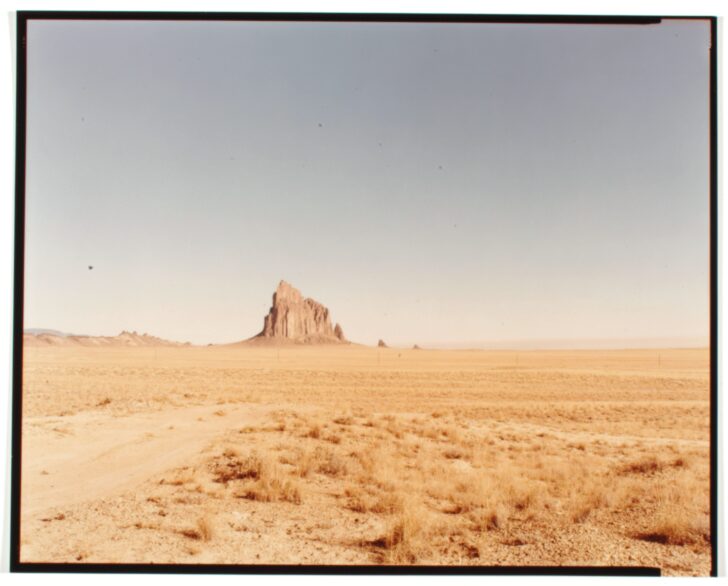Shiprock Triptych #1
Richard Misrach

Description
Gallery Rotation Spring/Summer 2011
Richard Misrach
United States, born 1949
Shiprock Triptych #1
1987
Cibachrome prints
Gift of Jack A. and Noreen Rounick, 2004/2.59.1–3
Born and raised in Los Angeles, Richard Misrach first began to photograph western landscapes as an undergraduate at Berkeley. Beginning in the late 1970s, he traveled extensively in the American West, using a large-format camera and color film to make beautiful and technically precise photographs of the often-disastrous effects mankind has had on the environment. For Shiprock Triptych #1, Misrach traveled to the Navajo and Chuska volcanic fields that stretch between northeastern Arizona and northwestern New Mexico, where Shiprock, the unique natural monument sacred to the Navajo, sits in close proximity to uranium mines and mill tailings (the radioactive waste resulting from the extraction and processing of uranium) that contaminate drinking and irrigation water and diffuse carcinogenic radon gas. Created from a volcanic eruption that occurred over 30 million years ago, Shiprock is shown in Misrach’s images as a majestic if distant presence, alone in the center of a sparse landscape. The three photographs—taken at intervals over the course of the day—emphasize both the actual passage of time and the sense of timelessness conjured by such natural monuments.
Subject Matter:
Using a large-format camera, Richard Misrach created this photograph of Shiprock, an ancient, towering monadnock located in the Navajo and Chuska volcanic fields that stretch between northeastern Arizona and northwestern New Mexico. The majestic geological formation, a unique natural monument sacred to the Navajo, sits in close proximity to uranium mines and mill tailings (the radioactive waste resulting from the extraction and processing of uranium) that contaminate drinking and irrigation water and diffuse carcinogenic radon gas. Uninformed and unprotected from the dangers of mining radioactive material in the uranium mines, thousands of Navajo workers and people have died or suffer from cancers, illnesses and birth defects since mining began on Navajo land in the early 1920s. The three photographs—taken at intervals over the course of the day—emphasize both the actual passage of time and the sense of timelessness conjured by such natural monuments. However, the photos also depict Shiprock from a great distance, alone in the center of a sparse landscape. This distance emphasizes the danger and fear of an irreparably contaminated place and draws attention to the racial and environmental injustice imbued in the landscape.
Physical Description:
This photograph depicts a desert landscape with a craggy rock formation rising in the far distance in the central portion of the horizon. A dirt road extends through the foreground. The top half of the image depicts a vast, cloudless sky in tones of blue and pink.
Usage Rights:
If you are interested in using an image for a publication, please visit https://umma.umich.edu/request-image/ for more information and to fill out the online Image Rights and Reproductions Request Form.